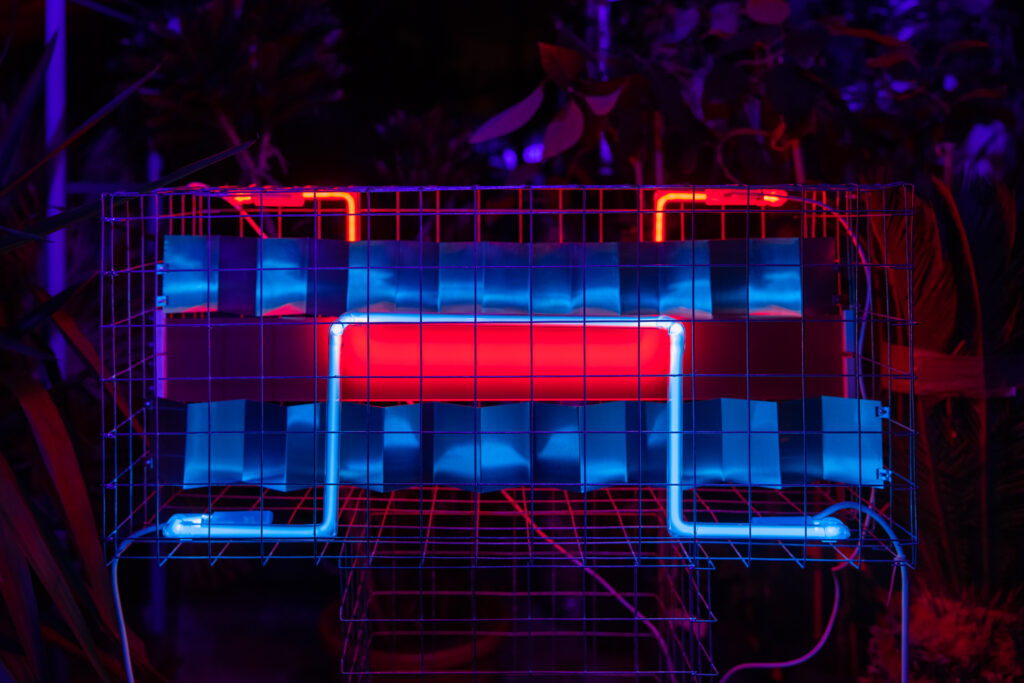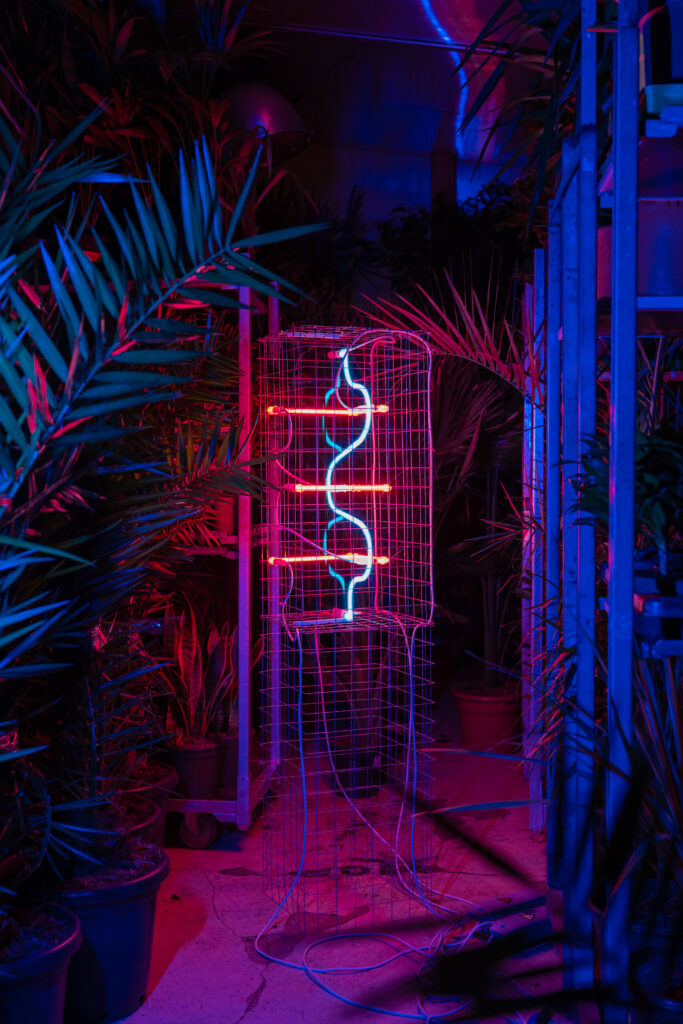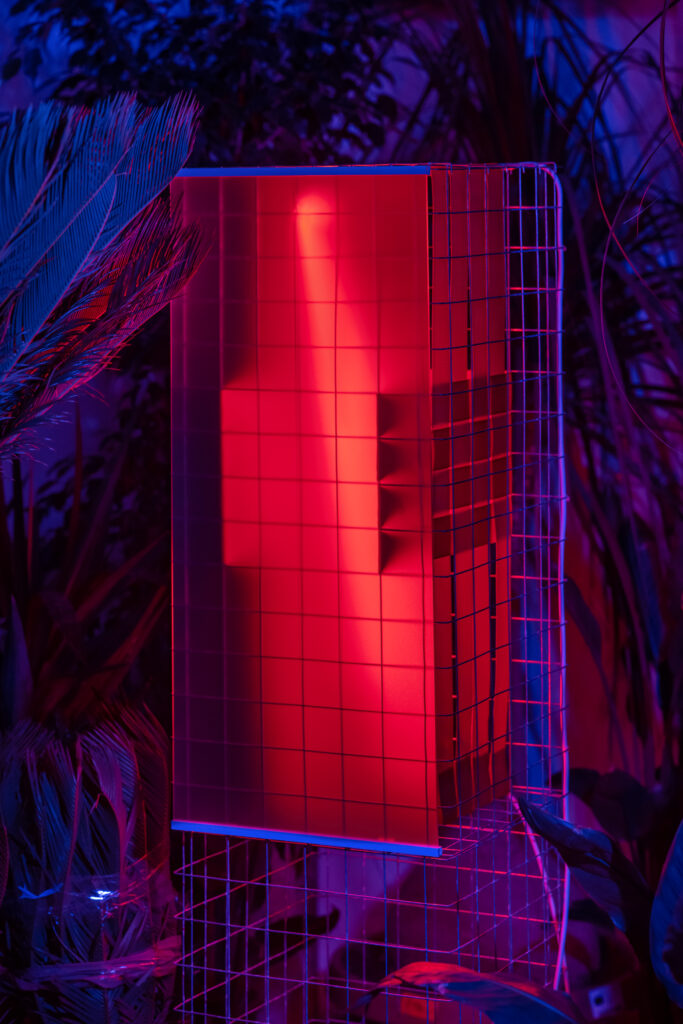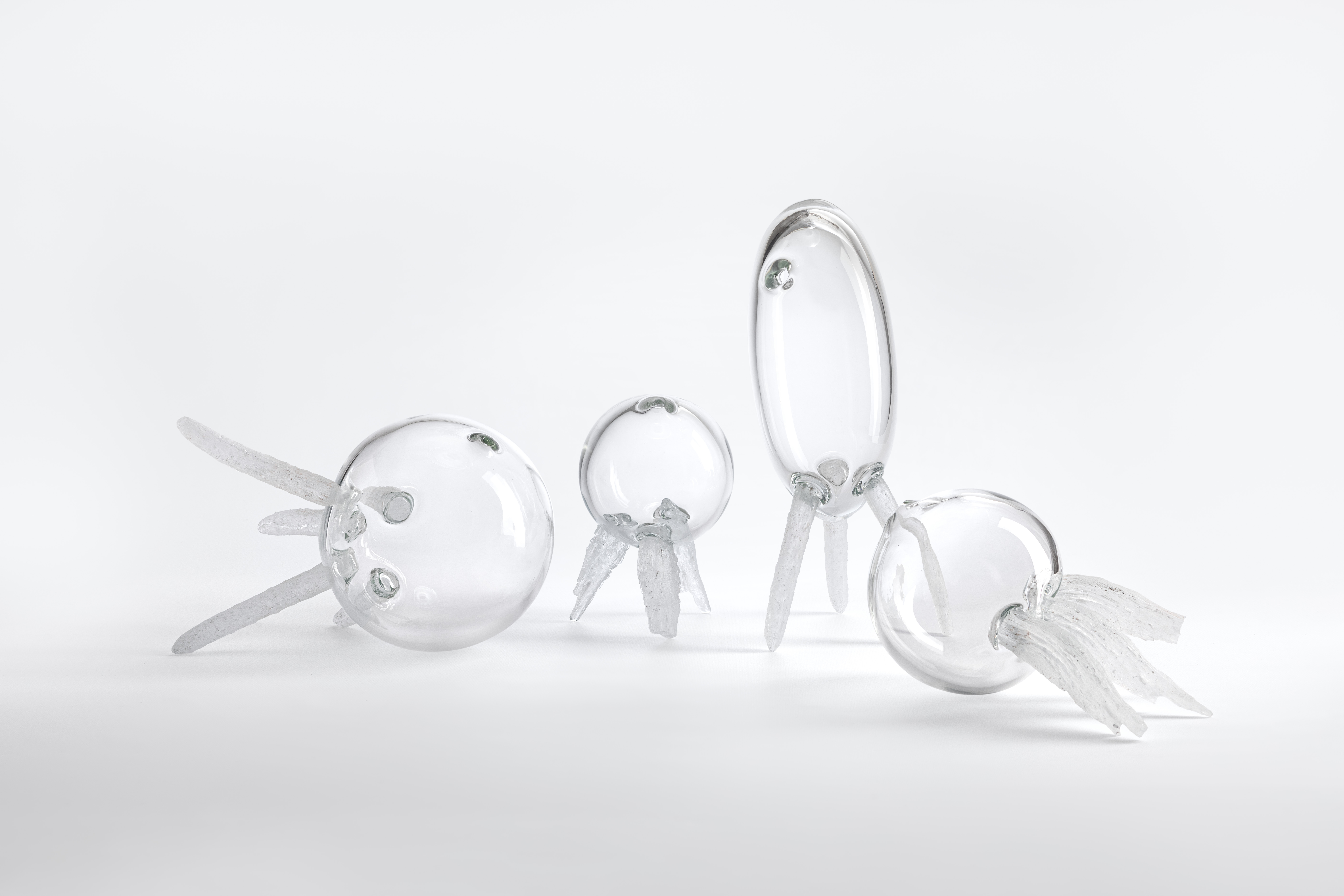31/1/2023 – 24/3/2023

W – Ω – W,, 2023 Galvanised wire, glass light tubes, frosted glass, aluminium sheet 35 × 80 × 35 cm Photo © Martin Faltejsek
Neon is typically associated with neon lights visible in advertising, logos, storefront signage and the like. Such lighting became highly popular during the 20th century thanks toits distinctive luminescent qualities coupled with the opportunities of shaping the glass lighting tubes to create all manner of distinctive typography and graphic designs –including through the use of moving parts. In the world of the fine arts, early 20th century Czech artist Zdeňek Pešánek serves as an archetypal example of those who pioneered the possibilities inherent in neon lighting, particularly during the interwar period. Many contemporary Czech (and global) artists have continued to utilise neonlighting. Most commonly this is evidenced in either art installations or via “retro” references to neon’s heyday in the world of advertising.

III S LLL, 2023 Galvanized wire, glass light tubes, smoked glass 160 × 35 × 35 cm Photo © Martin Faltejsek
But Czech glass artist David Černý* works with neon very differently, as previously evidenced by his student-era works, which demonstrated a strong inclination towards abstraction. The current NE -ON exhibition at Galerie Kuzebauch features four new three-dimensional works by the artist. The works feature cleverly conceived pure-colour discharges of light revealed within apertures and reflections, creating an overall highly charged effect. In these works Černý emphasises the different qualities of combined materials. Specifically, the artist creates a deliberate and contrasting interplay of light sources, glass panes, technical textiles and metals. In addition, Černý has created a number of wire cages, not as carriers or containers, but rather as elements of the works themselves, organically merging with the neon lighting, thus creating a balanced sense of overall meaning. Peeking inside the works reveals a kind of narrative. The artist has chosen a natural presentation, wherein the functionality of the pieces with their various wiring mechanics, is not concealed. This underscores the artist’s designer mindset, closely balancing the size of the given wire cages –and thus the overall works as a whole –allowing the dimensions of the raw components to guide the respective assembly process. Theillumination is allowed to both permeate, and also somewhat hide behind the respective works, with various deliberately placed structures serving as obstacles to the flow of light. Indeed, viewer interaction and point of view is also a key element of the intended aesthetic impact. Observers can stroll around the works, peeking inside or even right through them. Each side of the given works has an inherent value. Not in terms of relief –as is common with neon lighting –but rather through observers being able to see and explore statues of light.

/ I \, 2023 Galvanized wire, glass light tubes, frosted glass 160 × 35 × 35 cm Photo © Martin Faltejsek
Glass artist David Černý’sworks emerge from a kind of twilight, attracting our attention, demanding a deeper examination, and offering countless surprises. Observers are able to look directly into the neon lighting; it is pleasant on the eyes; at the same time, it shimmers gently,creating a sense of mysteriousness and etherealness, perhaps even of a transmutation into something alive. In creating such three-dimensional compositions that utilise a unique and captivating form of lighting David Černý continues to demonstrate his prowess as a highly individualistic and original contemporaryglassartist.
Curator of the exhibition is Milan Hlaveš.
Note:As many readers will no doubt be aware, more than one artist named David Černý is currently active in the Czech art scene. For this reason, we have chosen the pseudonym “David Černý David” for the glass artist.Indeed, this is already a long-standing nom de guerreused by Černý, serving as a kind of artist’s calling card designed to avoid confusion with any famous namesakes.Moreover, the name of the currentexhibition, NE -ON, is also deliberately intended as a wordplay with a deliberate dual meaning (in Czech “ne on” is a way of saying “nothim”).

